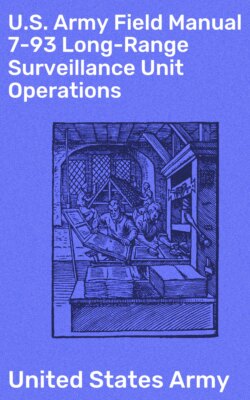Читать книгу U.S. Army Field Manual 7-93 Long-Range Surveillance Unit Operations - United States Army - Страница 17
На сайте Литреса книга снята с продажи.
1–10. WEAPONS AND EQUIPMENT
ОглавлениеTable of Contents
LRS teams operate with little or no support once in the area of operations. Operations in the enemy rear area requires the teams to have modern, lightweight weapons and equipment to complete the mission.
a. Weapons. The LRSC and LRSD are lightly armed but have a variety of organic small-arms weapons. Based on specific mission requirements, the unit is task-organized to meet the needs of the teams. The teams try to avoid contact.
b. Equipment. The special equipment they need is as follows.
(1) Communication. Each LRS team has an HF radio with burst device for two-way communication with the base stations. Each team has emergency-distress radios (AN/PRC-90 or AN/PRC-112) if evasion becomes the means of exfiltration.(2) Observation. LRS teams maintain observation of the objective at all times, in all kinds of weather. The LRS team has high-power day optics to aid in identifying enemy vehicles out to 5,000 meters. During limited visibility, the team identifies enemy vehicles out to 5,000 meters with both low-light amplification and infrared equipment.(3) Personal clothing and equipment. LRS teams can operate in any environment when equipped with mission-specific items of clothing and equipment (for example, skis, winter clothing, and snow shoes for arctic areas.)
